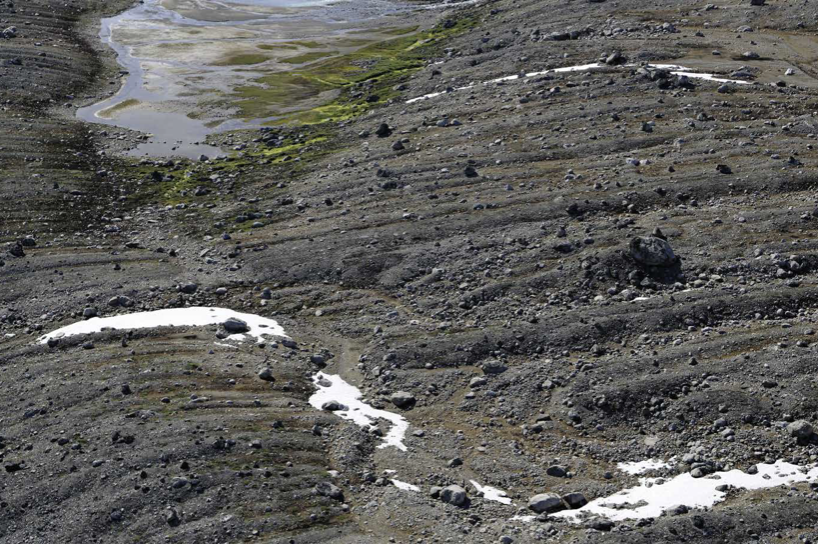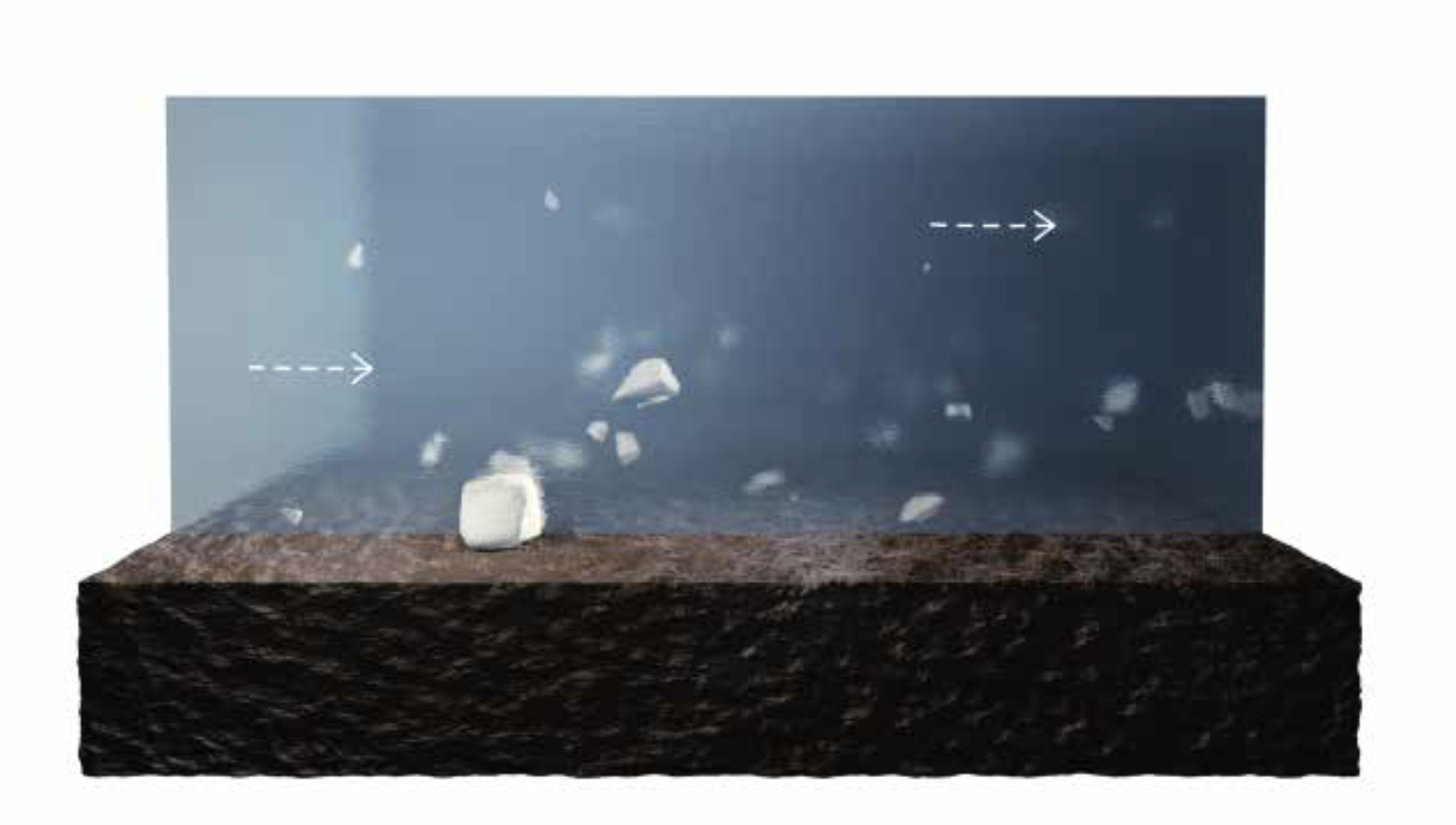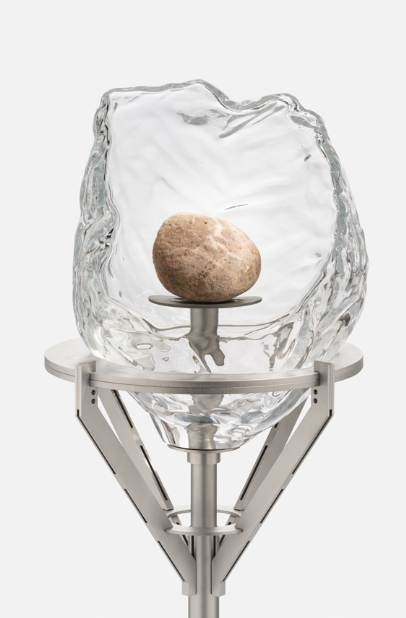
THE ENORMOUS FORCES OF THE ICE SHEET
Bullet-nose blocks are dragged by the ice and deposited when the ice melts.
Bullet-nose blocks can be different kinds of rock and contain important information about glaciers.

What can a bullet-nose block reveal?
What do you see in the picture on page 44?
Why are they called bullet-nose blocks?
This model no. 4 is one of the models on page 46. There is no explaining text to the models. A plausible text to no. 4 could be this:

This model shows how the ice has crushed the large boulders.
- Write a short text to the four models on page 46 like the one here explaining no. 4.
- How does the ice affect the landscape below it?
Could the ice flow be compared to other tools than a plane?
In the picture you see one of the rivers created by the meltwater on its way to the sea.
The meltwater gathers to form rivers, cutting deep into the ice.

- Which two factors determine the size of the ice sheet?
- Why has there in recent years been more melting of ice than addition of new snow?
How much would the global sea level rise if all of the ice sheet melted?
Bullet-nose blocks are dragged by the ice and deposited when the ice melts.
Bullet-nose blocks can be different kinds of rock and contain important information about glaciers.

What can a bullet-nose block reveal?
What do you see in the picture on page 44?
Why are they called bullet-nose blocks?
This model no. 4 is one of the models on page 46. There is no explaining text to the models. A plausible text to no. 4 could be this:

This model shows how the ice has crushed the large boulders.
- Write a short text to the four models on page 46 like the one here explaining no. 4.
- How does the ice affect the landscape below it?
Could the ice flow be compared to other tools than a plane?
In the picture you see one of the rivers created by the meltwater on its way to the sea.
The meltwater gathers to form rivers, cutting deep into the ice.

- Which two factors determine the size of the ice sheet?
- Why has there in recent years been more melting of ice than addition of new snow?
How much would the global sea level rise if all of the ice sheet melted?




